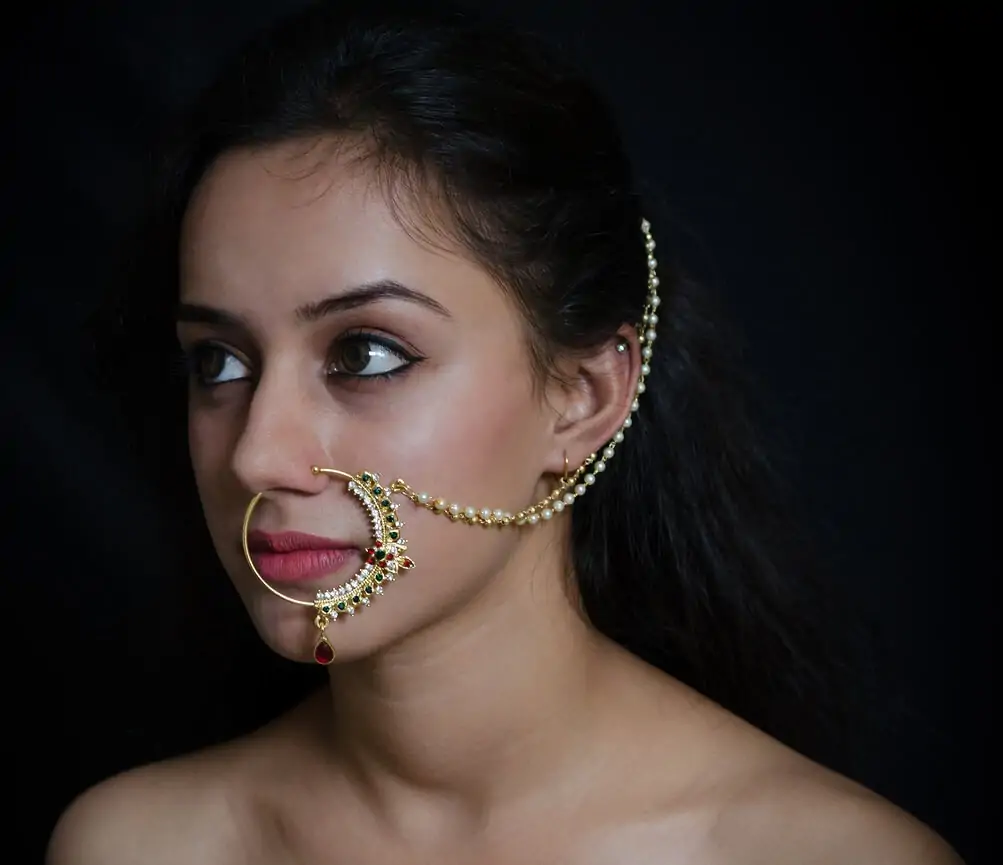
Table of Contents
While it is a relatively new practice in the West, the custom of wearing nose rings has been around for thousands of years in places such as the Middle East, India and Africa. In fact, piercing the nose is the second most popular type of body piercing after ear piercings.
In these places, the nose ring holds symbolic significance and is integrated into the culture, whereas in the West, wearing a nose ring can come across as being defiant and against traditional norms and values.
Depending on where you wear it, a nose ring can be seen as a beautiful accessory, a symbol of status, wealth or prestige or even as an act of rebellion.
Nose rings are among the oldest types of jewelry in the world, worn by men and women across the globe. While the trend of wearing nose rings is somewhat new in the Western world, in other parts of the world, the practice of wearing nose rings dates back hundreds, if not thousands, of years.
The Origin of Nose Rings
The tradition of wearing nose rings can be traced back to 44,000 BC in Australia, where the Aboriginal people wore crafted bone nose pieces through their nasal septums. They continued this form of adornment until recent times.
However, the practice that influenced the modern nose ring wearing tradition began in the Middle East over 4000 years ago. Even the Old Testament in the Bible references nose rings several times. From here, the custom migrated towards India, where by the 1500s it had become a part of the local way of life.
It wasn’t until the 20th century that nose rings as a form of jewelry came to the Western world. Hippies who visited India in the 60s embraced this practice and brought it back with them to America. Later on, punk and Goth communities also adopted the practice.
Today, nose piercings are becoming mainstream as an increasing number of people take to wearing them. To the West, wearing a nose-ring is often seen as somewhat rebellious. Like many other types of piercing, nose rings are often viewed in a negative light and frowned upon. However, in other parts of the world, the nose ring holds a position of cultural and historical significance.
Clearly, the meaning or significance of the nose ring varies from culture to culture. Here are some of the most commonly accepted meanings for nose rings:
Nose Rings and Wealth
For some, wearing a nose ring is an expression of wealth, social status and prestige. This is especially true for the Berber people of North Africa. Here, the wealthier and more important the person, the larger the nose ring! As part of the wedding rituals, the Berber groom gives his new wife the nose ring as a symbol of his wealth. Even today, this custom continues.
Nose Rings and Fertility

In India, the nose is seen as correlating to sexual health, fertility and child birth. Accordingly, having the left nostril pierced would result in easing the pain of the menstrual cycle, increasing sexual pleasure and assist with an easier childbirth. The Ayurvedic reasoning behind this is that a woman’s left nostril is connected to her reproductive organs.
Nose Rings and Marriage
Nose rings symbolize marriage in some parts of the world, although this is slowly changing today.
The oldest mention of a nose ring as a wedding gift is in the Bible, where Abraham gifts his daughter in law a gold nose ring on her marriage to his son Isaac. This practice of gifting the bride with a nose ring on her wedding day has continued in many parts of the Middle East, Africa and India.
In these parts of the world, wearing a nose ring often signified that you were married and, just like a wedding ring today, a married woman would hardly ever take off her nose ring.
Modern Meaning of Nose Rings

Although nose rings are still frowned upon by certain sections of Western society, today it has generally become an accepted practice. In the West, a nose piercing is seen as only a fashion accessory and holds little cultural or historical significance.
However, it can sometimes be viewed as an act of rebellion and a statement against conservative values. A reason for this is that nose rings are connected to the hippie, punk and Goth subcultures that adopted this practice in the 60s and 70s. This connection has somewhat stigmatized the act of wearing a nose ring.
Even today, wearing a nose ring can be frowned upon as being ‘unprofessional’ and some workplaces will not accept it. However, this view is changing slowly as more and more people get on the nose ring bandwagon, making the nose ring an acceptable accessory in the West.









